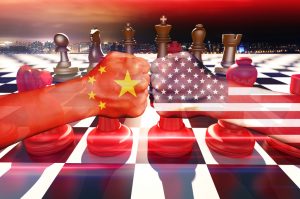
On Thursday, March 22, 2018, President Trump announced and signed a Presidential Proclamation to impose sweeping 25% Section 301 tariffs on the value of imports from China. The products to be included are aerospace, information and communication technology, and machinery on as many as 1,300 tariff lines.
The president’s order is in three parts:
Tariffs – The President has instructed the Trade Representative to publish a proposed list of products and any tariff increases within 15 days of today’s announcement. After a period of notice and comment, the Trade Representative will publish a final list of products and tariff increases.
WTO dispute – The President has instructed the Trade Representative to pursue dispute settlement in the World Trade Organization (WTO) to address China’s discriminatory technology licensing practices.
Investment restrictions – The President has directed the Secretary of the Treasury to address concerns about investment in the United States directed or facilitated by China in industries or technologies deemed important to the United States.
The United States Trade Representative (USTR) plans to announce the proposed list of affected products within the next several days.
- The list will be set out in a Federal Register notice seeking public comments on the proposed tariff action. Comments will be due 30 days from publication. The notice will also announce a date for a public hearing.
- USTR, with the assistance of the interagency Section 301 Committee, will review and analyze the comments.
- When the process is completed, USTR will announce the final determination
The authority to take this action is based on the Section 301 of the Trade Act of 1974. An investigation was initiated in August 2017 by the USTR. Since then, the USTR conducted public hearings, two rounds of public comment, and received written comments from a variety of individuals and groups. It resulted in a 215 page report entitled “China’s Acts, Policies, and Practices Related to Technology Transfer, Intellectual Property, and Innovation.”
From the report, the president cited the loss of 6 million jobs and the closing of 60,000 factories due to a $500 billion trade deficit with China and $800 billion overall deficit. The policy going forward is to have a “reciprocal” or “mirror” tax on countries that impose excessive tariffs on US goods and other unfair trade practices such as forced technology transfers and plausible deniability regarding cyber theft.
According to the president, the Chinese government’s technology transfer and intellectual property policies are part of China’s stated intention of seizing economic leadership in advanced technology as set forth in its industrial plans, such as “Made in China 2025.” The president indicated in his remarks that additional Section 301 investigations should be expected and this is the “first of many”.
There is significant opposition to this decision. Other countries, industry associations, and importers of Chinese goods fear the potential destabilization of the global economy. They warn that such an action will lead to a large-scale trade war. Of particular vulnerability are U.S. agriculture exports that are at risk of Chinese retaliatory tariffs. Economists meanwhile fear the reaction of stock market investors.